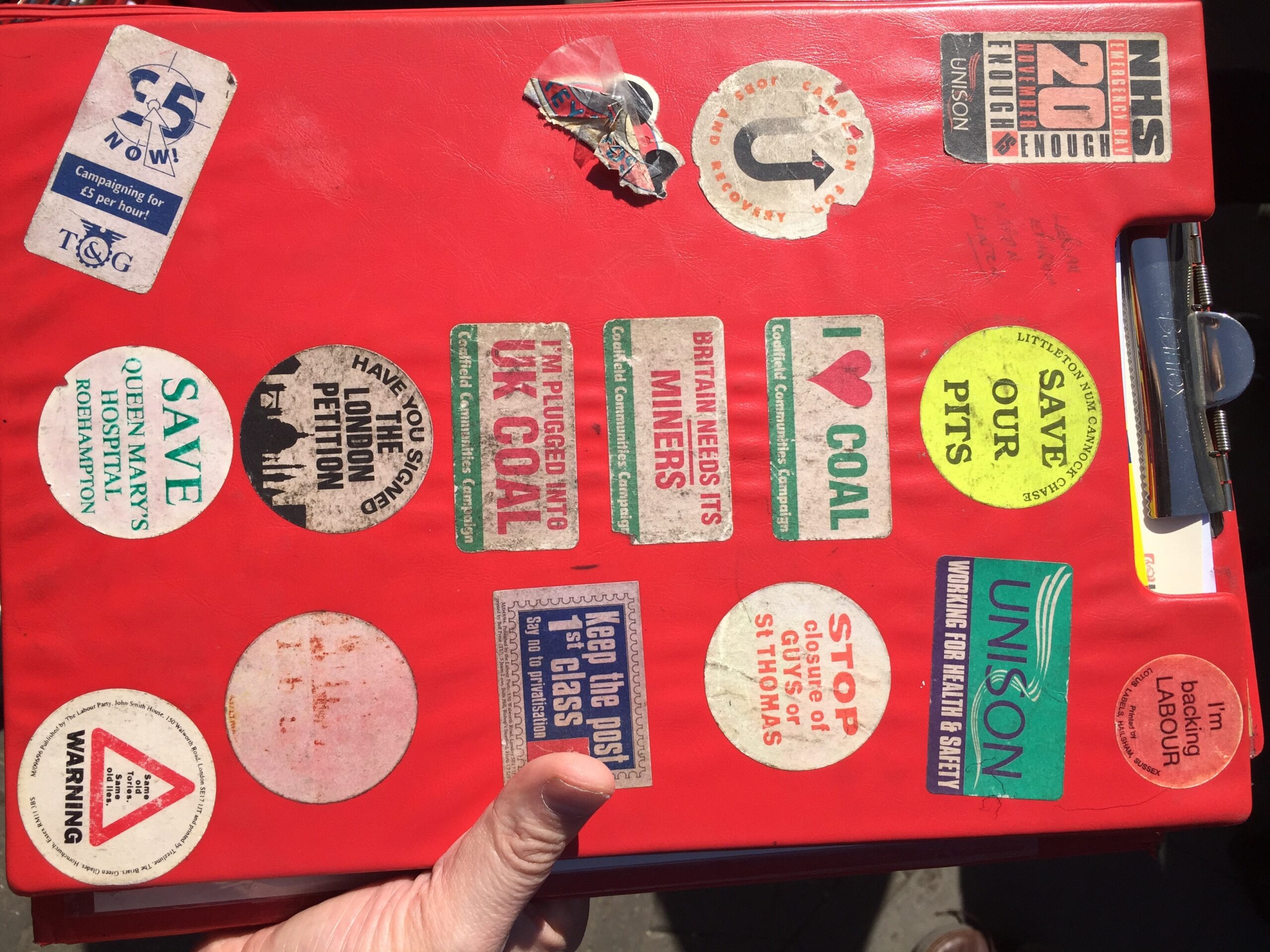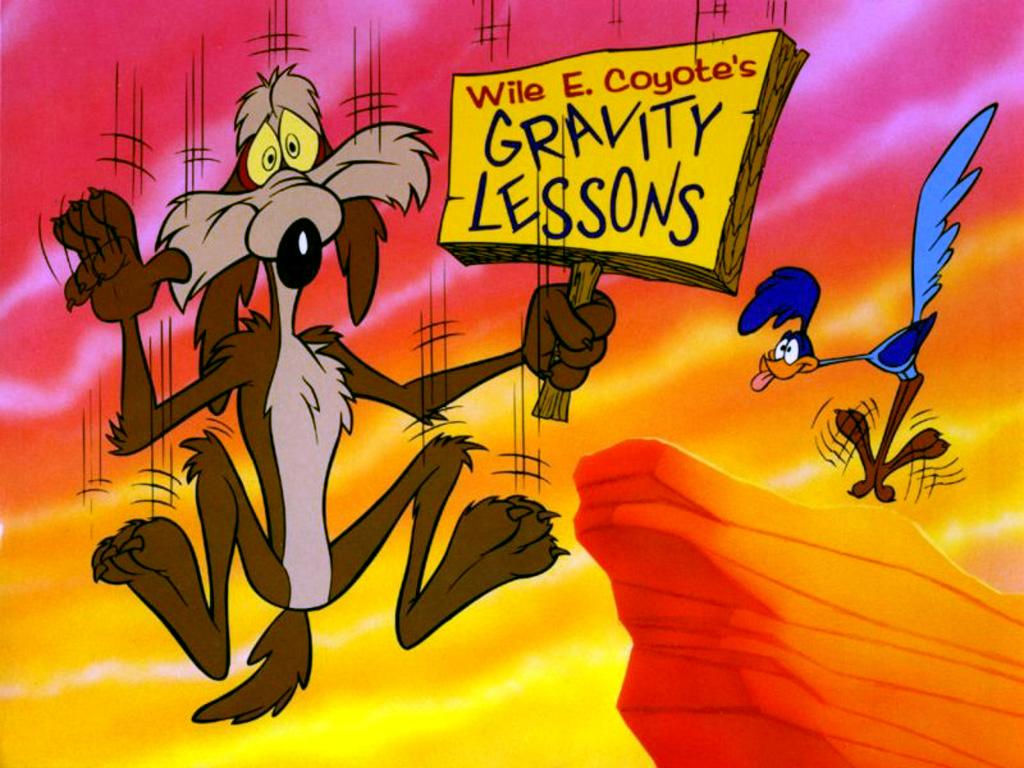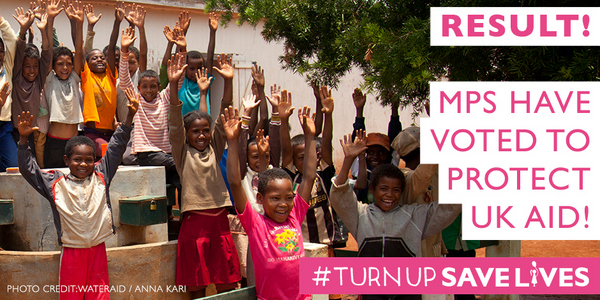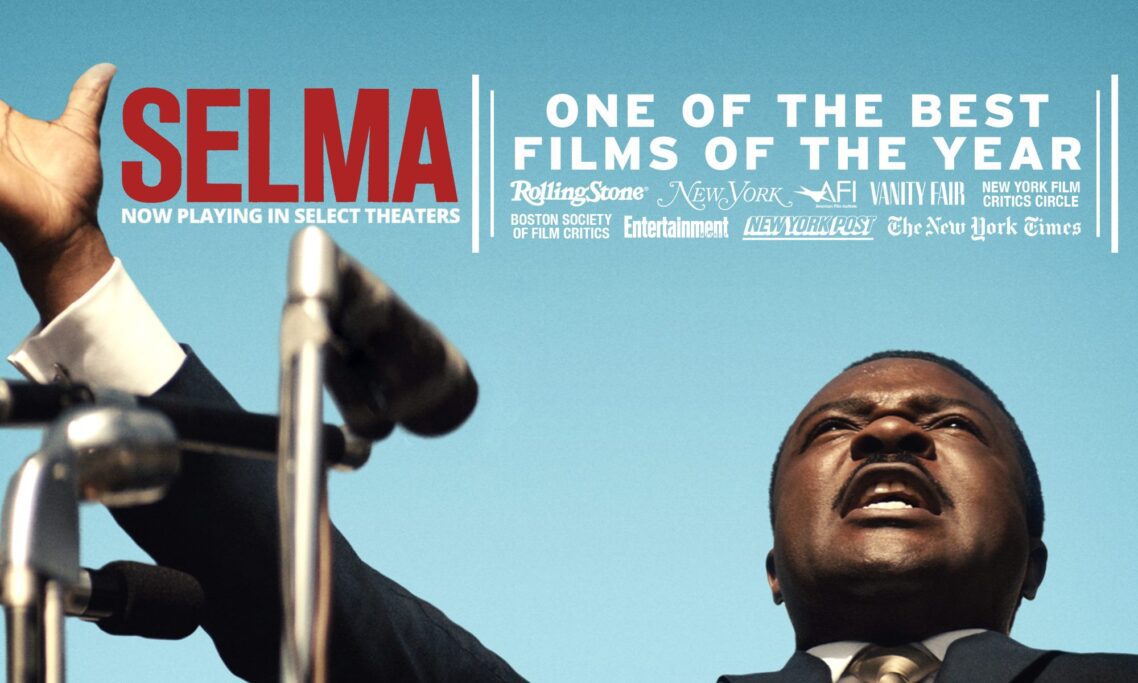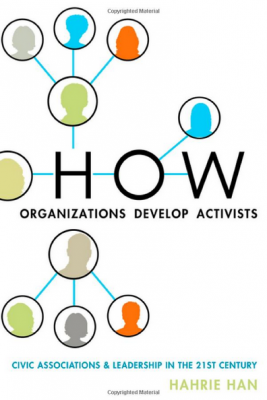Last night I stood down as Vice Chair – Campaigns for Tooting Labour Party, don’t worry this isn’t a long post about why Labour lost, but for the last five years I’ve been juggling being a campaigner by day, and a volunteer campaigner by night (and weekend!).
Some have suggested that charity workers shouldn’t be active members of political parties. It’s not a position that I agree with.
I think we want to see campaigners involved in a range of parties (as they already are), but begin involved in the Labour Party have made me a much better campaigner.
Here is how. It’s reminded me that;
1 – Most of the public really aren’t interested – Earlier in the year, I saw a stat from Jim Messina, the US election campaign, saying that between November and Election Day the average member of the UK public would spend just 104 minutes thinking about the election. I’m not sure of the accuracy of the statistic, but spend the weekend knocking on a few doors and you’ll know what he means. Most people aren’t that interested. I’ve often thought about how the message of my daytime campaigning will play on the doorsteps of floating voters in Tooting. How do I explain my issue in the snatched conversation before they’ll politely ask if they can get on with the rest of their day!
2 – All politics is local – It’s a cliche, but it’s true. Ask people what the issues or concerns are and they’ll probably tell you about the flytipping down the street or the like. Run a campaign to save a local pub, or make your road 20mph and it’ll be hit. If you’re writing camping literature you want to know what the impact is on the constituency or better still the ward. Campaigners who can provide that level of detail are setting themselves up for success (take for example this smart campaign from Shelter that does that).
3 – See politics up close – I’ve not worked for an MP, so being involved in a political party has provided me with an insight about the multiple demands on a MP or Councillor. How different groups and organisations can position themselves effectively to demonstrate support. How politics at all levels is about trade-offs and being much clear who your opponents are than is often the case in international development campaigning. It’s given me a living template for my power analysis.
4 – Volunteers matter – Obvious perhaps, but a local political parties like many campaigns rely on the dedication and commitment of an army of volunteers. Volunteers who need to be motivated, listened to, thanked, encouraged and inspired. Make it easy and enjoyable, they’ll come back and get more involved. You can never invest enough in your grassroots.
5 – Test and trial – when it comes to winning elections every vote matters, so I’ve spent hours trying to engage in the huge body of research and evidence about how to do that better. From how to increase turnout from irregular voters to targeting your messaging someone has done a study on it. I’ve written before (here and here) about how campaigners should look to elections campaigns for example of the best practice that often end up being used in our campaigning. The US presidential election is the pre-eminent example of this, but lots of good ideas come out of the UK General Election as well. Campaigners would do well to read the articles on Labour List, Conservative Home and elsewhere about worked and didn’t work ahead of 7th May.
6 – You need to do offline and online together – like many campaigns, political parties have become enthralled by the power of social media to engage voters and volunteers. It’s lead to some awesome content and ideas, but the evidences suggests its still only effective when combined with an effective ground game. The individuals who are prepared to knock on doors or organise in their communities. Campaigns that combine the two together do the best.
7 – Change can happen – Working in international development is my passion, but change can sometimes feels like it can take a long time to come, and the impact even longer (and further away), so being involved in local politics has helped to keep my thirst for change high.
Who are the best messengers for our campaigns?
A study out recently suggested that people could be persuaded to change their attitudes to same-sex marriage as the result of a 22 minute conversation with a gay canvasser.
It’s the type of research any issue campaigner is fascinated by. How to win someone over to support your argument.
Sadly those particular research findings have been discredited, but it got me thinking what does the evidence say about who the most effective individuals we can use to persuade audiences to support our campaign.
Here are a few studies I’ve come across;
- People are persuaded by people like them. Studies of field organising in election campaign has shown that if you want canvassers similar to the target population your trying to reach, I suspect that their is something in this for all those looking to persuade.
- The public have high levels of trust in academics and experts. They consistently perform well as the most trusted spokesperson in the Edelman Trust Barometer (incidentally in the study, NGO spokespeople also perform well, but those figures are dropping).
- Celebrities have a mixed impact. They don’t have the affect that you’d expect amongst the general public, although when asked the public think that they’ll be effective at persuading others, but they can be effective at gaining access to decision makers who believe they represent public sentiment.
- Change.org have proven the power of the personal stories of their petition starters, while the personal testimony to engage action is at the heart of the community organising approach of Citizens UK. The Story of Self, Us and Now is a effective tool to use, because research shows the human brain has a natural affinity for remembering facts and statistics when presented in a narrative construction (a story to you and me!).
- Whoever says it, make sure they say it again, and again and again. Its an age old adage from the marketing industry, but a good reminder to campaigners who get bored of the same message quickly. Those working on housing issues found it took a year of repeating and repeating the same core message to see the polling move.
This is my short list of studies, but please do use the comments box below to add others you know about.
Under Threat – 4 challenges to charities speaking out
I’m still digesting the full implications of the election results, but one (of the many) areas that I’m concerned about, is the space that charities and NGOs will have to speak out under the new government.
Remember those quotes about how charities should ‘stick to the knitting’, well that view just got more prominent in Government.
Now you might expect me to be an advocate for the importance of charities campaigning and I am. But looking across history I can see numerous example of how charities and NGOs have come together to push for change, as Ed Miliband rather eloquently put it during the election campaign;
And that’s the way change has always happened. Through people.
100 years ago, the trade unions joined together and campaigned for workers’ rights and they won.
70 years ago, the working people of our country joined together and campaigned for an NHS and they won.
40 years ago, working women joined together and campaigned to legislate for the principle of equal pay and they won.
20 years ago, the gay and lesbian community of our country joined together and campaigned for equality in law and they won.
And in all these movements and moments, when people asked who will fight this fight? They didn’t wait. They didn’t say it was up to someone else. They said “call on me”.
But one thing that could change over the next 5 years could be the space that charities and NGOs have to campaign. So what are the actual threats? Here are 4 potential challenges that every campaigner here in the UK needs to be concerned about.
1. Adjusting to the Lobbying Act – it’s now highly unlikely to be repealed and while Lord Hodgson is undertaking a review for the government of its impact (something we got thanks for campaigning) which could lead to some small changes, but the Lobbying Act is here to stay and we’ll need to adjust to it in future elections.
2. Reviewing CC9 – this is an important but little known piece of guidance that allows charities to campaign when they’re doing so in line with their charitable purpose. While the exact timetable is yet to be announced, expect it to happen in the next 12 months and don’t expect it to be a review that expands the space we have to campaign. This is going to be a critical fight.
3. Paying to protest – before the election, campaigners saw off a push from the Metropolitan Police to charge climate change campaigner to pay for the policing a peaceful march they were organising in Westminster. With further pressure on police budgets, expect to see the Police push this again. I’ve already heard of at least one event this could effect. While their are massive pressures on police budgets, it’d be a worrying precedent if we’re expected to pay to protest. With the London elections coming up, we need to be pushing for all the candidates to agree that the Metropolitan Police shouldn’t charge us for our right to protest.
4. Reporting on a charity’s total expenditure on campaigning activities – this was consulted on by the Charity Commission last year but they decided not to pursue it. Expect it to come back again, and while it might seem little like a small issue compared to the others above, my concern is that it could a) lead us to a situation like that in Canada where charities can only spend up to 10% of their income on campaigning activities and b) would mean charities have to spend more time to monitor this, potentially putting off smaller organisations from getting involved in advocacy, as they simply don’t have the capacity .
So what can be done about it?
- Become aware – all these threats are happening around us, become aware of them and start to think about the possible implications for your campaigning. If your on a board of an organisation that campaigns you want to be thinking about what these changes could mean for your organisation.
- Organise – campaigns are forming to respond to many of these challenge, and we know this works because it was thanks to campaigning on the Lobbying Act that we got some important concessions. Campaigners from a vast range of organisations need to get involved, campaigning on these issues, but its a classic example of a tragedy of the commons, we’re all affected by the changes but its not in any single organisations interest to campaign to stop the changes. If you in London, come along to this meeting on Monday 1st June to find out more about how we can organise together.
- Be prepared to stand in solidarity – not every campaigning organisation will affected by these changes. If you don’t organise marches, parliamentary lobbies or demonstrations you might not be concerned about pay to protest, but it’s the precedent that should concern us all. First it’s protests, but what next? Hand-ins? Parlimentary petitions? We need solidarity between campaigners on these issues, like we saw last year when concerns were raised about a tweet from Oxfam that led to 70 organisations signing onto a letter in The Times.
Five for Friday – Post-Election Special
The election might be old(ish) news, but the last week has generated some useful reading for campaigners.
1 – A wise campaigner learns from those who win. The Guardian has a exclusive video of Lynton Crosby sharing his insights, while the Spectator profiles the approach of American Jim Messina.
2 – Chris Rose has been here before, he shares his reflections on what campaigners should prepare to do next.
3 – Jim Coe asks if the election raises some more strategic questions for campaigners.
4 – Chloe Staples at NCVO has two brilliant posts on working with the new Parliament and new MPs, plus tips from the former MP for High Peak.
5 – Housing has raced up the political agenda over the last 5 years. Roger Harding shares some lessons from Shelter.
Feel free to post great post-election reads in the comment section below, and if you missed it, my thoughts are here.
Now What? 9 post-election thoughts
I’ll leave others to dissect why Labour lost, what the left in England can learn from the SNP, if now is the time to campaign for electoral reform and more.
While personally I’m gutted at the result having spent 5 years of my spare time organising for a Labour win, for now a few thoughts for campaigners from the last 30 days;
It’s time to re-read the Conservative manifesto. Put aside the work you did on what similarities it had with the Lib Dem manifesto, and what you’d like to see in a coalition agreement, perhaps also have a re-read of the 2010 Conservative manifesto as well, it could contain policy clues to what they might have done if they’d not been in coalition after the last election.
We need to ensure our campaign messages resonate in places like Lincoln, Nuneaton and Thurrock, not simply within Zone 1 – 2 – This article on why Labour struggled is bang on, but can the same can be said for many NGO campaigns? It’s easy for our campaigns to receive adulation on twitter, but do they play well to the floating voters on the High Streets in the marginal seats across the country?
The small majority might be an opportunity, so campaigns that have cross-party support, can work with independently minded Tories who can leverage their influence or find ways to demonstrate to those Tory MPs with small majorities that votes on a specific issues will cost them at the next election could win. It could mean uncomfortable coalitions, but it could mean successful campaign.
We (probably) won’t have another election until 2020, but elections in Scotland, Wales and London are less than 12 months away, as is a referendum on Europe, start planning for them now, but also keep an eye on the impact of the boundary reviews on the 2020 election.
Look at the campaign tactics that worked for the political parties. I’ve written before about elections being the birthplace of many campaign tactics that NGOs are using in years to come. The General Election had its fair share of clever tactics and approaches, some very smart digital tactics that the Labour Party used for example. This interview with the mastermind of the Conservative campaign, Lynton Crosby is worth a watch as well, as well as this list of NGO campaigns that cut through.
Parliament returns on 18th May but for lots of new MPs they’ll be spending the first few weeks actually looking for an office in Parliament, hiring staff, working out how to get emails on their phones, etc. Those campaigns and organisations that are helpful to new MPs are likely to be remembered favourably in the months and years to come.
Don’t forget those that didn’t get reelected, as Chloe Staples points out ‘It’s not inconceivable that many of these will turn up in the Lords or in public life in another way (perhaps in think tanks or even as charity chief executives!) so don’t forget to maintain the relationships you have so carefully built over the last five years’. So if you champion is returning later in the month, don’t forget to thank them.
The environment for campaigning could get tougher. It’s unlikely that repeal of the Lobbying Act is going to be easy (but that doesn’t mean we shouldn’t try), but we need to be prepared for bigger battles to come on the space for charities to campaign, like protecting CC9 the guidance that allows us to influence, which the government is likely now to review.
We need more charity campaigners to get involved in party politics. Some have suggested that charity workers shouldn’t be active members of political parties. It’s not a position that I agree with, not only does it seem illogical, many of those we’re fighting against are lobbyists who are member of political parties, but being involved in election campaigning has helped me to be a better campaigner, its taught me about what issues people really think about, how to mobilise volunteers, and much more.
How to stop your campaign falling off a cliff…
With summits on what replaces the Millenium Development Goals and another on Climate Change in Paris in December, plus a General Election, it’s fair to say that 2015 is a huge year for anyone campaigning on development.
Lots of brilliant campaigning is taking place, but when you’ve adopted a focus on a number of key moments, how do you avoid loosing the momentum and energy once that key summit has happened, or if negotiations don’t go your way.
Ensuring that your campaign is prepared not to ‘fall off a cliff’ is easy to overlook in the busyness of activities.
Here are a few thoughts on how to avoid that happening;
1. Acknowledge the risk – Be aware that the process that you’re trying to influence might not deliver all that you want it to. Things outside of your control happen that you can’t foresee. I’m amazed at the number of campaigns that haven’t given any thought to ‘what next’.
2. Commit resources – It doesn’t need to be much, but ensure you’ve held back some resource to ensure you’re ready for the day or week after. I remember in 2005, the plan for Make Poverty History was to focus on aid and debt up until the G8 summit and then move to focus on trade justice ahead of a WTO meeting in December, but after we’d put all our energies into mobilising 250,000 people to pressure the G8 in Scotland we didn’t have many people around to help plan for the next big push.
3. Build something that will last beyond – Campaigns moments come and go, but too few campaigns focus on building the infrastructure needed to win again and again. Be it re-energising local groups, building public support or raising understanding amongst decision makers ensure that your campaign is creating the conditions to ensure your next campaign is more likely to succeed.
4. Be honest with your campaigners about what’s going to happen and what happened – Let’s be frank. Make Povery History or Stop Climate Chaos might not have been the strap lines for campaigns. The framing suggested the possibility of something wasn’t achievable in a year or two. So let your campaigners know its a critical moment for action, the ‘crisistunity‘ is after all a great way of getting people to take action, but be honest if it hasn’t succeeded or there is more to do.
5. Map out possible scenarios – Take some time out of running your campaign to explore what might happen. Think through a few scenarios, some ‘what if’ options with a plan of what you’d do to respond to them. Scenario planning is an approach used by many to work out how they’ll respond before it happens (and what worked/didn’t work) but I don’ think widely adopted in the campaigning sector. Put your plan through its paces before the big moment.
6. Take time out yourself – There are no wins from burn out. Even in the busiest times we need you to be ready for the next campaign. If you’re in the heat of a campaign, it’s not your responsibility to plan for what next as well, although you probably want to make sure someone is thinking about it. So book time off after the big moment your working towards and time out in the weeks leading up to it.
7. Plan to evaluate – Sure, you’re busy, you have no time to reflect on what’s working, but the best learnings are, in my experience in the busyness of the moments, make sure you capture them. The Intense Period Debrief is a great way to approach this as a team.
8. Don’t stop at the announcement – Success. You’ve got the decision you’ve long been campaigning for. Congratulations but remember inplementation doesn’t automatically happen. Dial down your campaigns by all means, but keep following the process.
4 things you should know about monitoring and evaluation in campaigning
I keep getting asked questions about monitoring and evaluation in campaigning. I’ve no idea why but here are a few of my reflections on the challenges (and opportunities).
1- It’s as much an art as it is a science – This paper is one of my favourite on the topic suggests that “Advocacy requires an approach and a way of thinking about success, failure, progress, and best practices that is very different from the way we approach traditional philanthropic projects such as delivering services or modeling social innovations. It is more subtle and uncertain, less linear, and because it is fundamentally about politics, depends on the outcomes of fights in which good ideas and sound evidence don’t always prevail”. Simply put trying to apply evaluation approaches from programme work are unlikely to work, as INTRAC suggests “The reality is that evaluating advocacy is hard. There is no magic bullet and systems”.
2 – What your measuring is often just the tip of the iceberg – Jim Coe has just authored this paper which suggests “the most significant benefits (of campaigning) are often submerged: difficult to measure, to monetise and sometimes even to see. It’s right to anchor advocacy to rigorous assessment. But calculations of value can risk focusing only on the part that is visible, generating misleading information and encouraging poor decision-making”, suggesting, amongst other things, that we should approach advocacy as inherently speculative, as “not all advocacy efforts will pay off, so plan for, and take a long term view of, “aggregate return” on advocacy rather than focusing on individual successes”.
3 – Focus on the transformational as well as the transactional – when you set objectives its easy to focus on the outcomes (transactional) like the number of actions taken, open rate on an email or attendance at event. As this paper suggests your metrics “should capture quantity and quality, numbers and nuance, transactions and transformations” recognising the importance of the impact of your advocacy on transformations “the vital but sometimes “invisible” work. They show how people, organisations, and movements have been altered through the collective efforts”.
4 – Don’t ignore it – In the busyness of a campaign focusing on monitoring and evaluation can feel like a luxury, but here are some useful tools for quick evaluation. Simply put, any serious campaign should focus on investing in both monitoring and evaluating, while recognising that most of the impact you won’t see until long after your grant/campaign has ended, so its always good to think about going back to review campaigns you’ve run a while back.
I’d also encourage all campaigners to get better at sharing their evaluations. It’s time we had an ‘open evaluation’ movement to unlock and share all the learning across our campaigns to help each other. Feel free to use the comment sections to post links to any in the comment section below.
Looking for more ideas? This report from UNICEF has lots of useful tools and approaches.
11 lessons from #TurnUpSaveLives
Yesterday, I was able to celebrate (with loads of others) a huge campaign victory.
Over the last few months, one of the campaigns that has kept me busy has been #TurnUpSaveLives, a push to enshrine in law our commitment as a country to spend 0.7% of our national income on international development.
It’s been hard work (with lots of spreadsheets), but I’ve been fortunate to work alongside a great team of colleagues from 20+ organisations.
The bill, which was brought to Parliament by a Private Members Bill from Lib Dem MP Michael Moore, has now passed through the House of Lords and should receive Royal Assent before the election. It’s a big win.
I’ve learnt a lot from the campaign, here are a few brief thoughts;
1. A week really is a long time in politics – Days before both the second and third reading, we were still short of the 100 MPs we need to commit to attend, as campaigners it felt like we were running out of time but turns out the MPs are used to making changes to the diaries at the last minute, so a week really is a long time in politics!
2. Movements take time to build – I really enjoyed reading this reflection from Steve Lewis from Results UK, a reminder that the ‘movement’ calling for 0.7% goes back over 30 years, and Steve’s personal memories of a lobby of Parliament in 1984 calling for 0.7%. The votes were the culmination of the campaigning that started over 30 years ago and had grown, often working on other related topics (debt, trade, tax) but coming back when needed to 0.7%.
3. Make sure you know the process – Private Members Bills (PMBs) aren’t like normal bills that are driven by the Government, so understanding the Parliamentary procedure was vital, for example PMBs require you to get at least 100 MPs to attend on a Friday (when most MPs are scheduled to be in their constituencies), have to pass a Money Resolution (where Parliament has to agree to spending money on what’s being proposed), and the outcome of the Second Reading is used to decide the composition of the Bill Committee.
It was vital to use supportive MPs to help us understand what to expect to make sure we didn’t miss an opportunity, as well as making use of the helpful Parliament website where you can track the progress of the Bill.
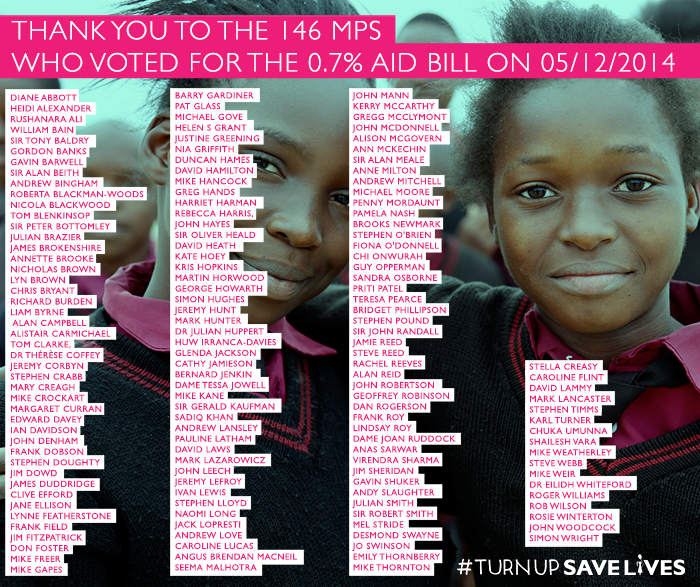
4. Opportunity Cost – For MPs to be in Parliament on a Friday, especially close to the election meant not attending a community event or meeting potential voters. We had to find ways to reduce the opportunity cost for MPs not being in their constituencies, for example we had a Lifesavers gallery where we publicly acknowledged (and thanked via twitter) who was attending, organised a photo moment with a celebrity to help MPs secure local media coverage, and placed a big emphasis on constituents writing or visiting MPs to ask them to attend.
5. Using Twitter – We got #turnupsavelives trending twice on the day of the Third Reading in December, it was thrilling, but looking through the tweets it proved that twitter can be a bit of an echo chamber, with most coming from those who were involved or supportive of the campaign.
However, where we did find twitter useful in the run up to to thank those MPs who had committed to attend or ask those who hadn’t to do so, as well as thanking those that did attend. Encouraging organisations to use their corporate accounts and also those of CEOs or other senior staff worked well, turns out MPs like to be thanked by NGOs. Having access to an in-house designer at Global Poverty Project to quickly turn around images we could share was invaluable.
6. Precedent – Often we’re campaigning were about looking to change somethings, but setting a precedent is one of the most overwhelming reasons not to do something for a politician. We found that early on in the campaign our hope to get parties to whip their MPs into attending was unlikely to happen, Labour doesn’t whip on Private Member’s Bill and didn’t want to set a precedent by doing so for this bill. So finding examples of where a party has done this before is really useful in demonstrating that you’re not asking to set a precedent in supporting your ask.
7 – Don’t forget to say thank you – I remember a MP once complaining to me that after he’d voted for something a campaigning organisation had asked him for the next letter he got was asking for something else. Its easy to forget to say ‘Thank You’ for MPs for voting (and we didn’t do enough after the second reading in September) but come the Third Reading, having a graphic ready to share the names of MPs who’d turned, sending cards from supporters, getting on the phone to key MPs, and writing letters from CEOs ensured we were doing all we could to show our appreciation to MPs who attended the vote.
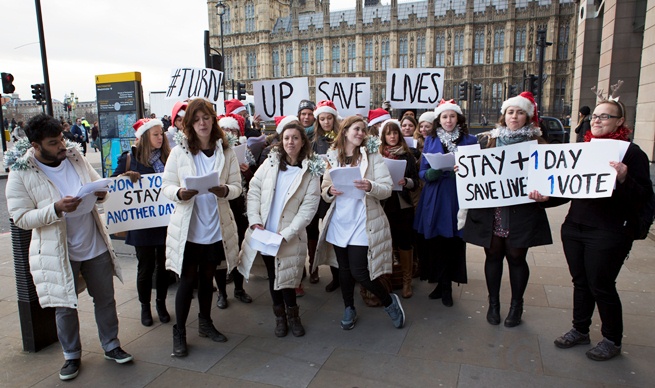
8. Insider/Outside – The campaign was a great example of how insider and outsider tactics can work together. We needed to be mobilising constituents to email, tweet, call and visit MPs asking them to visit, that helped to create a belief that and a constituency of support, but we also needed to be working the corridors of Westminster, understanding the positions of the different parties, providing the arguments about why we need, getting CEOs to call key MPs to use their influence to make sure we reached enough MPs pledged to attend, etc.
9. Building the right coalition – We didn’t spend lots of agreeing how the coalition was going to work, instead we kept our structures lean and simple forming three groups (one for campaigners, media and public affairs colleagues) with central coordination from Bond. The Turn Up Save Live. We worked to ensure that we tried to get as many organisations involved, including Unions and Faith Leaders. On reflection, we could have done even more to build a unusual coalition in support.
10. Supporters loved it – Lots of organisations reported that the actions they’d invited supporters to take was one of the most popular actions, I think everyone enjoyed the binary nature of the campaign, that your MP was either going to turn up or not, rather than the indirect actions we’re often asking supporters to take appealed to people.
11. Working with Lords is completely different – That’s for another post, but we learnt quickly that the same approach wasn’t going to work. Lords need to be engaged in very different ways.
Want to learn more? I’d be delighted to come and speak to your team based on the learning from the campaign.
Lessons in how change happens from #SelmaMovie
If you take nothing else from this post. Go see the movie Selma.
I promise you its the most powerful film you’ll see this year, and a ‘must watch’ for anyone interested in how change happens.
Much has been written about Martin Luther King and the Civil Rights Movement, but walking out from seeing Selma I was struck by a few lessons that should resonate for all campaigners;
1 – You can’t go alone – The film centres on the leadership of Martin Luther King, played brilliant by David Oyelowo, but throughout the film you see the importance of the role of the other leaders of the Southern Christian Leadership Coalition (SCLC). When wrestling over strategy, training the movement or negotiating with those in power, your reminded that although Luther King led the movement, he was ably supported by individuals like Abernathy, Lewis and Young. He need these companions to support him both strategically and spiritually as leader.
2 – You need to build your movement – In preparation for seeing the film I’ve been enjoying Taylor Branch’s ‘Pillar of Fire’, its a brilliant history of the Civil Rights Movement, and while the film touches on the work of the Student Nonviolent Coordinating Committee (SNCC), the book is reminder of the work that happened in places like Selma, Greenville, and elsewhere across the south, it was SNCC and others who worked to register voters and build consciousness amongst black communities. For movements to have moments like the marches in Selma you need to be committed to the hard work of organising before them.
3 – Have your second (and third) act planned – The film shows what strategic mastermind that King was, as he prepares for the Selma to Montgomery marches, he knew that his presence would draw nationwide media coverage. While the film doesn’t shed light on if the outcome of the Bloody Sunday march, where marches were viciously attacked by the local Police and State Troopers, could have been predicted, it’s clear that King was aware that he would need to call a second march (known as Turnaround Thursday) to increase the pressure on President Johnson and show the resolve of the movement. To often campaigns plan for the big moment but don’t think what they’ll do next.
4 – Capitalise on your opponents mistakes – As King explains why he’s moved the campaign to Selma, their is an interesting dialogue about why the campaign had ‘failed’ in Albany, Georgia, because local Police Chief, Laurie Pritchett, had studied the non-violent principles and developed a strategy to response which had muted the effectiveness of the movement, and the expected response of Selma Sheriff, Jim Clark, who they anticipated would respond in the violent way he did, helping to gain attention for the campaign. Throughout the film you see how Luther King sought to understand his opponents and exploit their weaknesses. Like a Judoka, he skilfully ‘throws’ his opponents using their power/strength.
5 – Use all the tactics available to you – While the film centres on the marches in Selma as part of the push to get the Voting Rights Act, through the film you also see how Dr King and the SCLC used a range of tactics available to them to put pressure on President Johnson to push the Act through Congress, from legal challenges, media, use of celebrities, to building diverse coalitions, although the SCLC focused on mass mobilisation, it sought to use all the approaches available to it.
Why Developing Your Grassroots Matters – My review of 'How Organizations Develop Activist' by Hahrie Han
Since reading it last year, I’ve been telling anyone who’d listen about why they should read Hahrie Han’s book “How Organizations Develop Activist“.
So I was delighted to be asked to contribute to a special Mobilizing Ideas dialogue on the book. A extract from my review is below, but I’d encourage you to head across to the Mobilizing Ideas blog to read the rest of my review and some cracking contributions from other brilliant organisers and academics.
Han has turned her lens on what she describes as national associations, which appear to be organisations with longstanding programs of grassroots work linked with grasstops influencing, neither mentioned by name but one working in health and the other environment, but you get the impression the lessons are widely applicable.
While there are certainly difference between our approach to grassroots campaigning in the UK to the US, for example less of a focus on state/local level activism, we’re generally keen to learn from trends in the US, and while enjoying the book I was reminded of the lessons from Theda Skocpol’s study on why the push to get action on climate change in 2010 failed in part because it focused too much on grasstops lobbying, rather than the slow work of strategically building power, a sobering lesson for any organisation that nurturing your grassroots matters.
Turning the pages, in the book Han hits the sweet spot in the challenges anyone who works with local chapters or groups. The characterisation of groups being categorised into 3 types, Lone Wolves, Activists and Organiser rings true for anyone who’s been involved in working with local groups.
Lone Wolves being those who chose to ‘to build power by leveraging information — through legal briefs, public comments, and other forms of research advocacy’ while ‘mobilisers and organizers, by contrast, choose to build power through people’.
For many its easy to see activism and organising as the same, but as Jim Coe points out in his review of the book that the ‘two strategic models are in fact based on radically different philosophies and approaches’.
This central idea is one that I found most challenging in the work that I do. I often find myself using the words interchangeably, but as Joy Cushman suggests in the book “The organizer thus makes two [strategic] choices: 1) to engage others, and 2) to invest in their development. The mobilizer only makes the first choice. And the lone wolf makes neither”.
The study is full of practical ideas and evidence insight, for me 5 things stand out as challenges and opportunities for those working in ‘traditional’ organisations or associations looking to build grassroots networks;
- The need to focus on transformational and transactional outcomes – Han refers to the this paper on Metrics that Matter suggesting in the rush to prove to funders and if were honest often others in our organisations the value of our work we can spend too much time focusing on transactional outcomes (the number of emails sent for example) but we need to focus more on transformational outcomes that reflect the often ‘invisible’ work of building capacity and how people have been altered through collective efforts.
- Develop the approach of a coach when working with supporters – groups that had adopted an organising approach were ones that Han understood the need to create a ‘network that grows’, as staff at the heart of an association its easy to revert to an activist approach, but should focus on coaching those involved in groups about how to overcome specific challenges or situations that they are facing.
- Question the narrative – Han talks about the way she observed different chapters making meaning of their work through past experiences “Remember when we got 100 people to attend the meeting”, suggesting its more than just the ‘we’ve always done it this way’ perspective but a sense of believing that we develop a ‘taste’ for specific approach. We need to challenge this.
- Bring people together for fun – the research finds that the most successful chapters or group were those that combined political and social activities, deepening commitment and a sense of shared values. Perhaps a learning that feels obvious in the cold light of day but too often in my experience overlooked.
- Make our approach sticky – making the time to invest in leadership development isn’t easy, but for chapters to succeed the rationale for adopting a particular method of change needs to become ‘sticky’ that is passed on from one generation of leaders to another.
This post first appeared on the Mobilizing Ideas February Essay Dialogues, and can be read in full here.
